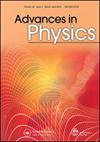关于简单立方晶格的Ising模型
IF 35
1区 物理与天体物理
Q1 PHYSICS, CONDENSED MATTER
引用次数: 30
摘要
1920年引入的Ising模型描述了一个单轴磁矩系统,该系统定域于晶格上,通过最近邻交换相互作用相互作用。它是连续相变的一般模型,可以说是理论物理中研究最多的模型。自从1944年Onsager对二维晶格进行求解以来,它代表了少数几个高于1维的精确可解模型之一,它已成为分析处理和数值算法新发展的试验场。只有级数展开和数值方法,如蒙特卡罗模拟,在三维可用。本文的重点是蒙特卡罗模拟。我们建立在一个空前庞大的数据集之上。该模型在临界耦合附近估计了大量的量。对于临界指数,我们提出了传统的分析和普塞级数的分析。前者给出了不同的高低温指数值;通过后一种方法,我们可以使这些指数相等,但代价是只有在非常接近临界点的地方才有真正的渐近行为。这对晶格系统的模拟结果进行了详细的讨论。本文章由计算机程序翻译,如有差异,请以英文原文为准。
On the Ising model for the simple cubic lattice
The Ising model was introduced in 1920 to describe a uniaxial system of magnetic moments, localized on a lattice, interacting via nearest-neighbour exchange interaction. It is the generic model for a continuous phase transition and arguably the most studied model in theoretical physics. Since it was solved for a two-dimensional lattice by Onsager in 1944, thereby representing one of the very few exactly solvable models in dimensions higher than one, it has served as a testing ground for new developments in analytic treatment and numerical algorithms. Only series expansions and numerical approaches, such as Monte Carlo simulations, are available in three dimensions. This review focuses on Monte Carlo simulation. We build upon a data set of unprecedented size. A great number of quantities of the model are estimated near the critical coupling. We present both a conventional analysis and an analysis in terms of a Puiseux series for the critical exponents. The former gives distinct values of the high- and low-temperature exponents; by means of the latter we can get these exponents to be equal at the cost of having true asymptotic behaviour being found only extremely close to the critical point. The consequences of this for simulations of lattice systems are discussed at length.
求助全文
通过发布文献求助,成功后即可免费获取论文全文。
去求助
来源期刊

Advances in Physics
物理-物理:凝聚态物理
CiteScore
67.60
自引率
0.00%
发文量
1
期刊介绍:
Advances in Physics publishes authoritative critical reviews by experts on topics of interest and importance to condensed matter physicists. It is intended for motivated readers with a basic knowledge of the journal’s field and aims to draw out the salient points of a reviewed subject from the perspective of the author. The journal''s scope includes condensed matter physics and statistical mechanics: broadly defined to include the overlap with quantum information, cold atoms, soft matter physics and biophysics. Readership: Physicists, materials scientists and physical chemists in universities, industry and research institutes.
 求助内容:
求助内容: 应助结果提醒方式:
应助结果提醒方式:


